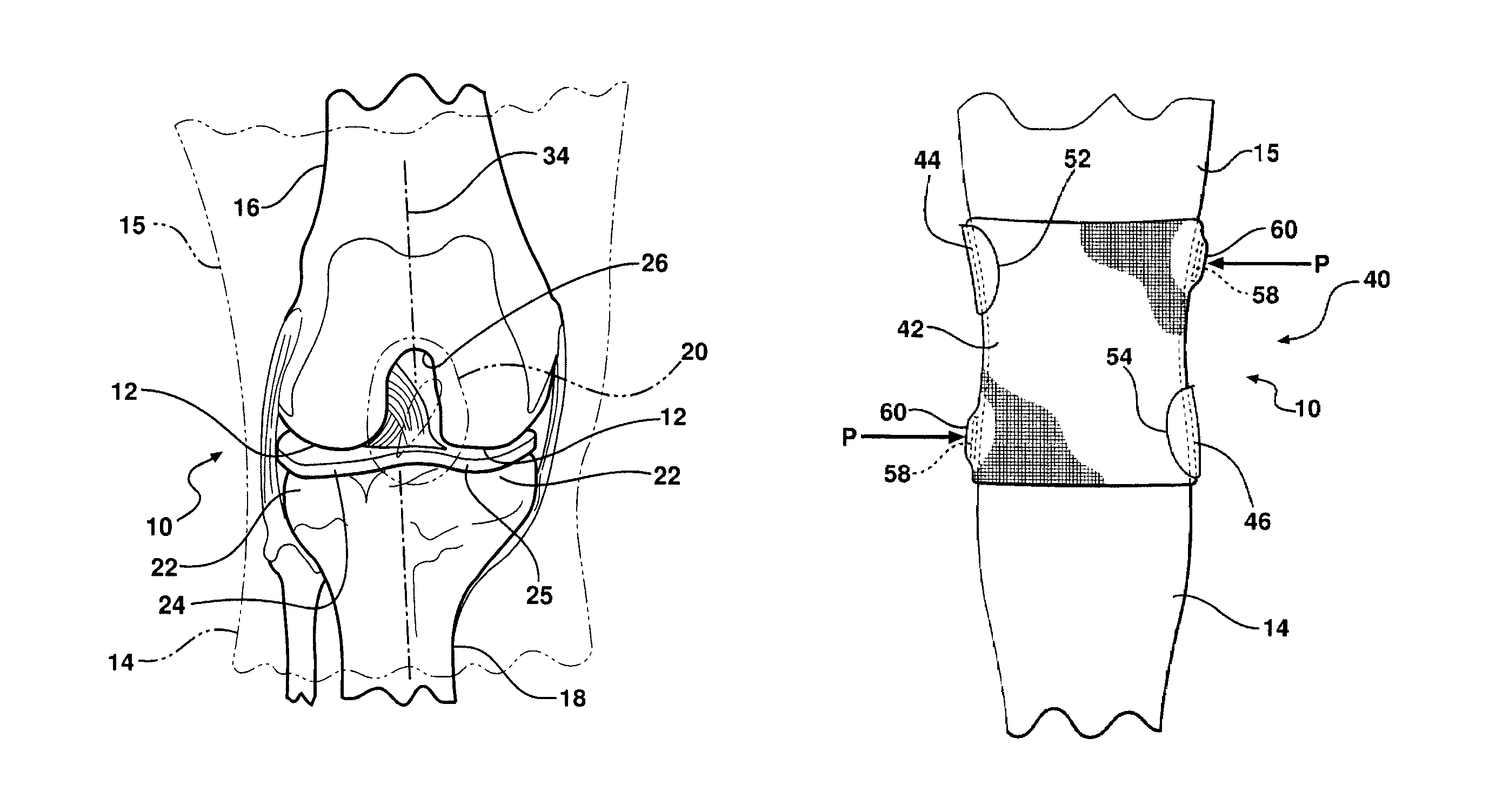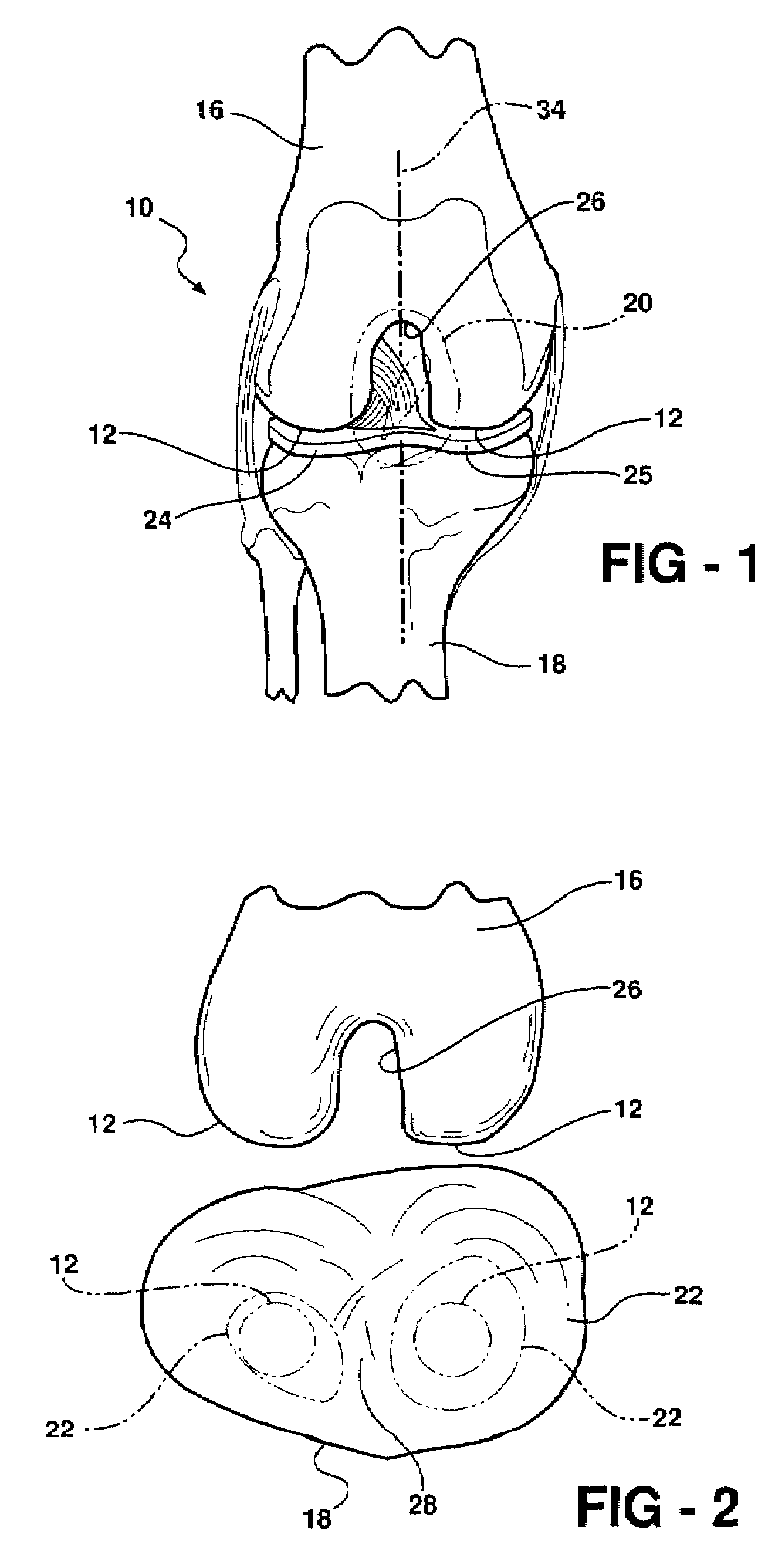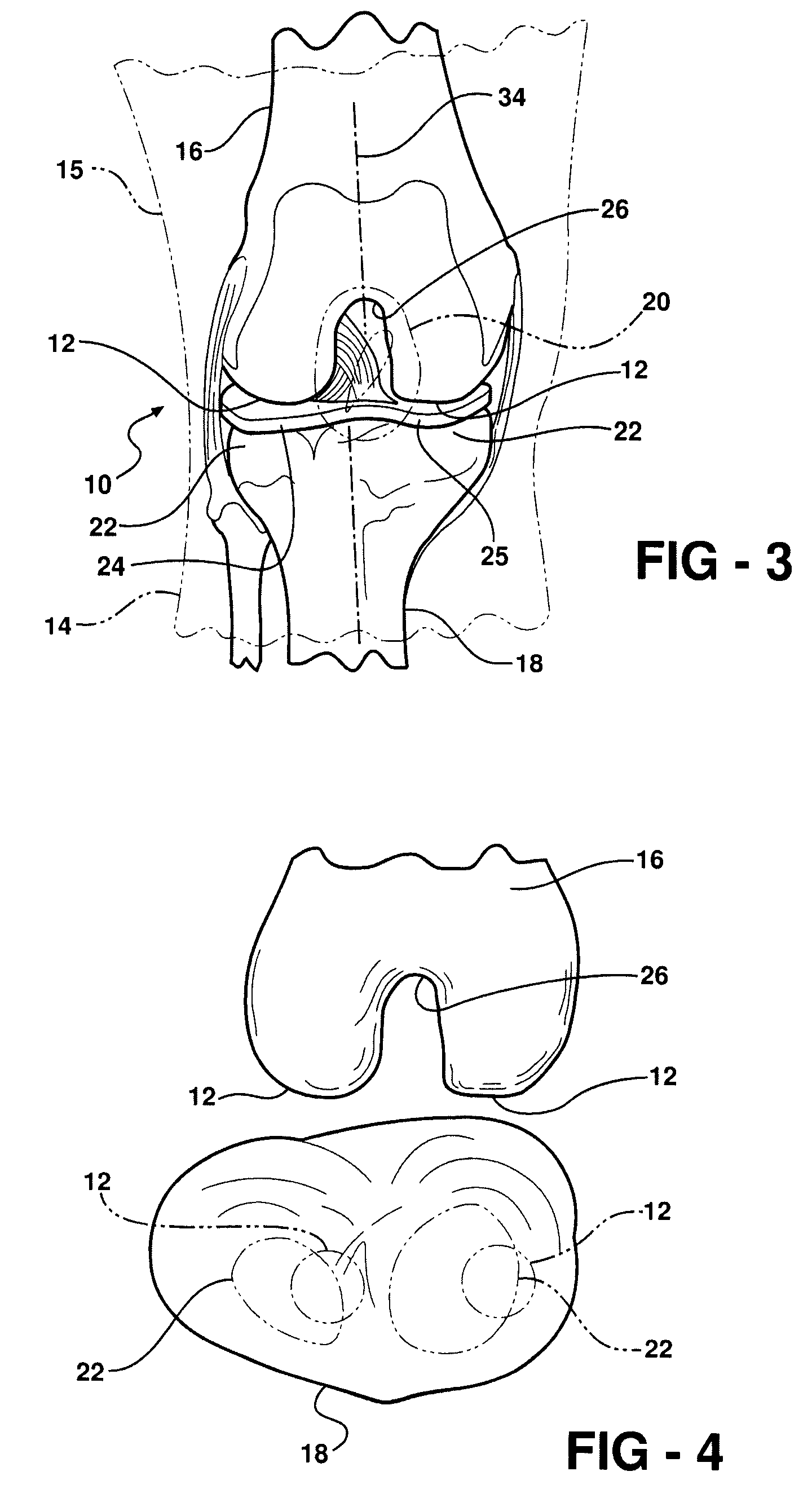Knee brace and methods of use and modification thereof
a technology of knee braces and knees, applied in the field of knee braces, can solve the problems of not being able to withstand significant side forces, originating laterally or medially, and being more susceptible to being shifted off its midline plane, and achieves the effects of not being able to easily adjust, reducing side load, and reducing side load
- Summary
- Abstract
- Description
- Claims
- Application Information
AI Technical Summary
Benefits of technology
Problems solved by technology
Method used
Image
Examples
Embodiment Construction
[0044]Referring in more detail to the drawings, FIGS. 8-12 show a four-way knee brace 40 constructed according to one embodiment of the invention for imparting corrective shear or side loads resulting in corresponding side pressures above and below the knee joint 10 of a user. The knee brace 40 is adjustable to apply the appropriate magnitude of side forces in the respective lateral and medial directions above and below the knee joint 10 simultaneously to correct a condition of patello-femoral syndrome. The side forces applied opposite one another above and below the knee joint 10 realign the misaligned femoral and tibial condyles 12, 22 relative to one another, and in proper alignment with the meniscus 24 (FIG. 7) therebetween. Accordingly, the knee brace 40 relieves any discomfort typically associated with the patello-femoral condition, while also preventing potential or additional damage to the knee joint 10. As such, the knee brace 40 provides a noninvasive, economical mechanism...
PUM
 Login to View More
Login to View More Abstract
Description
Claims
Application Information
 Login to View More
Login to View More - R&D
- Intellectual Property
- Life Sciences
- Materials
- Tech Scout
- Unparalleled Data Quality
- Higher Quality Content
- 60% Fewer Hallucinations
Browse by: Latest US Patents, China's latest patents, Technical Efficacy Thesaurus, Application Domain, Technology Topic, Popular Technical Reports.
© 2025 PatSnap. All rights reserved.Legal|Privacy policy|Modern Slavery Act Transparency Statement|Sitemap|About US| Contact US: help@patsnap.com



